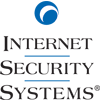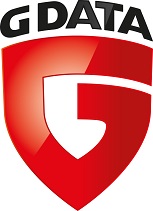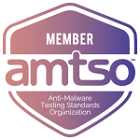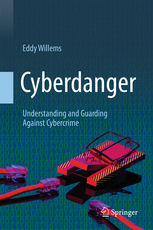Security Information and Tools
Please be careful as we cannot control the contents of these sites!
Some of my favourites …
- 2600 Magazine Home Page
- Security Tools Top 100 Site (Only for educational use)
- Steve Gibson Security Site
- Zone-H Org. Site (Defaced sites history and archive)
- All the Links to Security by Peter Gutmann
Some of my test favourites …
Several Security Tools
The links are in random order. Be careful how to use them. Only use them for legitimate purposes!
Take also a look at the tools from every security vendor mentioned at my security vendor page.
I personally love the the tools on the G Data Software Tools page.
| #1 |  Nessus : Premier UNIX vulnerability assessment tool Nessus : Premier UNIX vulnerability assessment toolNessus was a popular free and open source vulnerability scanner until they closed the source code in 2005 and removed the free “registered feed” version in 2008. A limited “Home Feed” is still available, though it is only licensed for home network use. Some people avoid paying by violating the “Home Feed” license, or by avoiding feeds entirely and using just the plugins included with each release. But for most users, the cost has increased from free to $1200/year. Despite this, Nessus is still the best UNIX vulnerability scanner available and among the best to run on Windows. Nessus is constantly updated, with more than 20,000 plugins. Key features include remote and local (authenticated) security checks, a client/server architecture with a GTK graphical interface, and an embedded scripting language for writing your own plugins or understanding the existing ones. |
| #2 |  Wireshark : Sniffing the glue that holds the Internet together Wireshark : Sniffing the glue that holds the Internet togetherWireshark (known as Ethereal until a trademark dispute in Summer 2006) is a fantastic open source network protocol analyzer for Unix and Windows. It allows you to examine data from a live network or from a capture file on disk. You can interactively browse the capture data, delving down into just the level of packet detail you need. Wireshark has several powerful features, including a rich display filter language and the ability to view the reconstructed stream of a TCP session. It also supports hundreds of protocols and media types. A tcpdump-like console version named tethereal is included. One word of caution is that Ethereal has suffered from dozens of remotely exploitable security holes, so stay up-to-date and be wary of running it on untrusted or hostile networks (such as security conferences). |
| #3 |  Snort : Everyone’s favorite open source IDS Snort : Everyone’s favorite open source IDSThis lightweight network intrusion detection and prevention system excels at traffic analysis and packet logging on IP networks. Through protocol analysis, content searching, and various pre-processors, Snort detects thousands of worms, vulnerability exploit attempts, port scans, and other suspicious behavior. Snort uses a flexible rule-based language to describe traffic that it should collect or pass, and a modular detection engine. Also check out the free Basic Analysis and Security Engine (BASE), a web interface for analyzing Snort alerts.Open source Snort works fine for many individuals, small businesses, and departments. Parent company SourceFire offers a complimentary product line with more enterprise-level features and real-time rule updates. They offer a free (with registration) 5-day-delayed rules feed, and you can also find many great free rules at Bleeding Edge Snort. |
| #4 |  Netcat : The network Swiss army knife Netcat : The network Swiss army knifeThis simple utility reads and writes data across TCP or UDP network connections. It is designed to be a reliable back-end tool that can be used directly or easily driven by other programs and scripts. At the same time, it is a feature-rich network debugging and exploration tool, since it can create almost any kind of connection you would need, including port binding to accept incoming connections. The original Netcat was released by Hobbit in 1995, but it hasn’t been maintained despite its immense popularity. It can sometimes even be hard to find nc110.tgz. The flexibility and usefulness of this tool have prompted people to write numerous other Netcat implementations – often with modern features not found in the original. One of the most interesting is Socat, which extends Netcat to support many other socket types, SSL encryption, SOCKS proxies, and more. It even made this list on its own merits. There is also Chris Gibson’s Ncat, which offers even more features while remaining portable and compact. Other takes on Netcat include OpenBSD’s nc, Cryptcat, Netcat6, PNetcat, SBD, and so-called GNU Netcat. |
| #5 | Metasploit Framework : Hack the Planet Metasploit took the security world by storm when it was released in 2004. No other new tool even broke into the top 15 of this list, yet Metasploit comes in at #5, ahead of many well-loved tools that have been developed for more than a decade. It is an advanced open-source platform for developing, testing, and using exploit code. The extensible model through which payloads, encoders, no-op generators, and exploits can be integrated has made it possible to use the Metasploit Framework as an outlet for cutting-edge exploitation research. It ships with hundreds of exploits, as you can see in their online exploit building demo. This makes writing your own exploits easier, and it certainly beats scouring the darkest corners of the Internet for illicit shellcode of dubious quality. Similar professional exploitation tools, such as Core Impact and Canvas already existed for wealthy users on all sides of the ethical spectrum. Metasploit simply brought this capability to the masses. |
| #6 | This handy little utility assembles and sends custom ICMP, UDP, or TCP packets and then displays any replies. It was inspired by the ping command, but offers far more control over the probes sent. It also has a handy traceroute mode and supports IP fragmentation. This tool is particularly useful when trying to traceroute/ping/probe hosts behind a firewall that blocks attempts using the standard utilities. This often allows you to map out firewall rulesets. It is also great for learning more about TCP/IP and experimenting with IP protocols. |
| #7 | Kismet is an console (ncurses) based 802.11 layer2 wireless network detector, sniffer, and intrusion detection system. It identifies networks by passively sniffing (as opposed to more active tools such as NetStumbler), and can even decloak hidden (non-beaconing) networks if they are in use. It can automatically detect network IP blocks by sniffing TCP, UDP, ARP, and DHCP packets, log traffic in Wireshark/TCPDump compatible format, and even plot detected networks and estimated ranges on downloaded maps. As you might expect, this tool is commonly used for wardriving. Oh, and also warwalking, warflying, and warskating, … |
| #8 |  Tcpdump : The classic sniffer for network monitoring and data acquisition Tcpdump : The classic sniffer for network monitoring and data acquisitionTcpdump is the IP sniffer we all used before Ethereal (Wireshark) came on the scene, and many of us continue to use it frequently. It may not have the bells and whistles (such as a pretty GUI or parsing logic for hundreds of application protocols) that Wireshark has, but it does the job well and with fewer security holes. It also requires fewer system resources. While it doesn’t receive new features often, it is actively maintained to fix bugs and portability problems. It is great for tracking down network problems or monitoring activity. There is a separate Windows port named WinDump. TCPDump is the source of the Libpcap/WinPcap packet capture library, which is used by Nmap among many other tools. |
| #9 | UNIX users often smugly assert that the best free security tools support their platform first, and Windows ports are often an afterthought. They are usually right, but Cain & Abel is a glaring exception. This Windows-only password recovery tool handles an enormous variety of tasks. It can recover passwords by sniffing the network, cracking encrypted passwords using Dictionary, Brute-Force and Cryptanalysis attacks, recording VoIP conversations, decoding scrambled passwords, revealing password boxes, uncovering cached passwords and analyzing routing protocols. It is also well documented. |
| #10 |  John the Ripper : A powerful, flexible, and fast multi-platform password hash cracker John the Ripper : A powerful, flexible, and fast multi-platform password hash crackerJohn the Ripper is a fast password cracker, currently available for many flavors of Unix (11 are officially supported, not counting different architectures), DOS, Win32, BeOS, and OpenVMS. Its primary purpose is to detect weak Unix passwords. It supports several crypt(3) password hash types which are most commonly found on various Unix flavors, as well as Kerberos AFS and Windows NT/2000/XP LM hashes. Several other hash types are added with contributed patches. You will want to start with some wordlists, which you can find here, here, or here. |
| #11 | Ettercap is a terminal-based network sniffer/interceptor/logger for ethernet LANs. It supports active and passive dissection of many protocols (even ciphered ones, like ssh and https). Data injection in an established connection and filtering on the fly is also possible, keeping the connection synchronized. Many sniffing modes were implemented to give you a powerful and complete sniffing suite. Plugins are supported. It has the ability to check whether you are in a switched LAN or not, and to use OS fingerprints (active or passive) to let you know the geometry of the LAN. |
| #12 | Nikto : A more comprehensive web scanner Nikto is an open source (GPL) web server scanner which performs comprehensive tests against web servers for multiple items, including over 3200 potentially dangerous files/CGIs, versions on over 625 servers, and version specific problems on over 230 servers. Scan items and plugins are frequently updated and can be automatically updated (if desired). It uses Whisker/libwhisker for much of its underlying functionality. It is a great tool, but the value is limited by its infrequent updates. The newest and most critical vulnerabilities are often not detected. |
| #13 | Ping/telnet/dig/traceroute/whois/netstat : The basics While there are many whiz-bang high-tech tools out there to assist in security auditing, don’t forget about the basics! Everyone should be very familiar with these tools as they come with most operating systems (except that Windows omits whois and uses the name tracert). They can be very handy in a pinch, although for more advanced usage you may be better off with Hping2 and Netcat. |
| #14 |  OpenSSH / PuTTY / SSH : A secure way to access remote computers OpenSSH / PuTTY / SSH : A secure way to access remote computersSSH (Secure Shell) is the now ubiquitous program for logging into or executing commands on a remote machine. It provides secure encrypted communications between two untrusted hosts over an insecure network, replacing the hideously insecure telnet/rlogin/rsh alternatives. Most UNIX users run the open source OpenSSH server and client. Windows users often prefer the free PuTTY client, which is also available for many mobile devices. Other Windows users prefer the nice terminal-based port of OpenSSH that comes with Cygwin. Dozens of other free and proprietary clients exist. You can explore them here or here. |
| #15 | THC Hydra : A Fast network authentication cracker which supports many different services When you need to brute force crack a remote authentication service, Hydra is often the tool of choice. It can perform rapid dictionary attacks against more then 30 protocols, including telnet, ftp, http, https, smb, several databases, and much more. Like THC Amap this release is from the fine folks at THC. |
| #16 | A Java based web proxy for assessing web application vulnerability. It supports editing/viewing HTTP/HTTPS messages on-the-fly to change items such as cookies and form fields. It includes a web traffic recorder, web spider, hash calculator, and a scanner for testing common web application attacks such as SQL injection and cross-site scripting. |
| #17 |  Dsniff : A suite of powerful network auditing and penetration-testing tools Dsniff : A suite of powerful network auditing and penetration-testing toolsThis popular and well-engineered suite by Dug Song includes many tools. dsniff, filesnarf, mailsnarf, msgsnarf, urlsnarf, and webspy passively monitor a network for interesting data (passwords, e-mail, files, etc.). arpspoof, dnsspoof, and macof facilitate the interception of network traffic normally unavailable to an attacker (e.g, due to layer-2 switching). sshmitm and webmitm implement active monkey-in-the-middle attacks against redirected ssh and https sessions by exploiting weak bindings in ad-hoc PKI. A separately maintained partial Windows port is available here. Overall, this is a great toolset. It handles pretty much all of your password sniffing needs. |
| #18 | Netstumbler is the best known Windows tool for finding open wireless access points (“wardriving”). They also distribute a WinCE version for PDAs and such named Ministumbler. The tool is currently free but Windows-only and no source code is provided. It uses a more active approach to finding WAPs than passive sniffers such as Kismet or KisMAC. |
| #19 |  THC Amap : An application fingerprinting scanner THC Amap : An application fingerprinting scannerAmap is a great tool for determining what application is listening on a given port. Their database isn’t as large as what Nmap uses for its version detection feature, but it is definitely worth trying for a 2nd opinion or if Nmap fails to detect a service. Amap even knows how to parse Nmap output files. This is yet another valuable tool from the great guys at THC. |
| #20 | GFI LANguard : A commercial network security scanner for Windows GFI LANguard scans IP networks to detect what machines are running. Then it tries to discern the host OS and what applications are running. It also tries to collect Windows machine’s service pack level, missing security patches, wireless access points, USB devices, open shares, open ports, services/applications active on the computer, key registry entries, weak passwords, users and groups, and more. Scan results are saved to an HTML report, which can be customized/queried. It also includes a patch manager which detects and installs missing patches. A free trial version is available, though it only works for up to 30 days. |
| #21 |  Aircrack : The fastest available WEP/WPA cracking tool Aircrack : The fastest available WEP/WPA cracking toolAircrack is a suite of tools for 802.11a/b/g WEP and WPA cracking. It can recover a 40 through 512-bit WEP key once enough encrypted packets have been gathered. It can also attack WPA 1 or 2 networks using advanced cryptographic methods or by brute force. The suite includes airodump (an 802.11 packet capture program), aireplay (an 802.11 packet injection program), aircrack (static WEP and WPA-PSK cracking), and airdecap (decrypts WEP/WPA capture files). |
| #22 | Superscan : A Windows-only port scanner, pinger, and resolver SuperScan is a free Windows-only closed-source TCP/UDP port scanner by Foundstone. It includes a variety of additional networking tools such as ping, traceroute, http head, and whois. |
| #23 | Netfilter is a powerful packet filter implemented in the standard Linux kernel. The userspace iptables tool is used for configuration. It now supports packet filtering (stateless or stateful), all kinds of network address and port translation (NAT/NAPT), and multiple API layers for 3rd party extensions. It includes many different modules for handling unruly protocols such as FTP. For other UNIX platforms, see Openbsd PF (OpenBSD specific), or IP Filter. Many personal firewalls are available for Windows (Tiny,Zone Alarm, Norton, Kerio, …), though none made this list. Microsoft included a very basic firewall in Windows XP SP2, and will nag you incessantly until you install it. |
| #24 | Sysinternals : An extensive collection of powerful windows utilities Sysinternals provides many small windows utilities that are quite useful for low-level windows hacking. Some are free of cost and/or include source code, while others are proprietary. Survey respondents were most enamored with:
Update: Microsoft acquired Sysinternals in July 2006. |
| #25 | Retina : Commercial vulnerability assessment scanner by eEye Like Nessus, Retina’s function is to scan all the hosts on a network and report on any vulnerabilities found. It was written by eEye, who are well known for their security research. |
| #26 | Perl / Python / Ruby : Portable, general-purpose scripting languages While many canned security tools are available on this site for handling common tasks, scripting languages allow you to write your own (or modify existing ones) when you need something more custom. Quick, portable scripts can test, exploit, or even fix systems. Archives like CPAN are filled with modules such as Net::RawIP and protocol implementations to make your tasks even easier. |
| #27 |  L0phtcrack : Windows password auditing and recovery application L0phtcrack : Windows password auditing and recovery applicationL0phtCrack attempts to crack Windows passwords from hashes which it can obtain (given proper access) from stand-alone Windows workstations, networked servers, primary domain controllers, or Active Directory. In some cases it can sniff the hashes off the wire. It also has numerous methods of generating password guesses (dictionary, brute force, etc). LC5 was discontinued by Symantec in 2006, then re-acquired by the original L0pht guys and reborn as LC6 in 2009. For free alternatives, consider Ophcrack, Cain and Abel, or John the Ripper. |
| #28 | Scapy : Interactive packet manipulation tool Scapy is a powerful interactive packet manipulation tool, packet generator, network scanner, network discovery tool, and packet sniffer. It provides classes to interactively create packets or sets of packets, manipulate them, send them over the wire, sniff other packets from the wire, match answers and replies, and more. Interaction is provided by the Python interpreter, so Python programming structures can be used (such as variables, loops, and functions). Report modules are possible and easy to make. |
| #29 | Sam Spade : Freeware Windows network query tool Sam Spade provides a consistent GUI and implementation for many handy network query tasks. It was designed with tracking down spammers in mind, but can be useful for many other network exploration, administration, and security tasks. It includes tools such as ping, nslookup, whois, dig, traceroute, finger, raw HTTP web browser, DNS zone transfer, SMTP relay check, website search, and more. Non-Windows users can enjoy online versions of many of their tools. |
| #30 | GnuPG / PGP : Secure your files and communication w/advanced encryption PGP is the famous encryption program by Phil Zimmerman which helps secure your data from eavesdroppers and other risks. GnuPG is a very well-regarded open source implementation of the PGP standard (the actual executable is named gpg). While GnuPG is always free, PGP costs money for some uses. |
| #31 | AirSnort is a wireless LAN (WLAN) tool that recovers encryption keys. It was developed by the Shmoo Group and operates by passively monitoring transmissions, computing the encryption key when enough packets have been gathered. You may also be interested in the similar Aircrack. |
| #32 |  BackTrack : An Innovative Penetration Testing live Linux distribution BackTrack : An Innovative Penetration Testing live Linux distributionThis excellent bootable live-CD Linux distribution comes from the merger of Whax and Auditor. It boasts a huge variety of Security and Forensics tools and provides a rich development environment. User modularity is emphasized so the distribution can be easily customized by the user to include personal scripts, additional tools, customized kernels, etc. |
| #33 |  P0f : A versatile passive OS fingerprinting tool P0f : A versatile passive OS fingerprinting toolP0f is able to identify the operating system of a target host simply by examining captured packets even when the device in question is behind an overzealous packet firewall. P0f does not generate ANY additional network traffic, direct or indirect. No name lookups, no mysterious probes, no ARIN queries, nothing. In the hands of advanced users, P0f can detect firewall presence, NAT use, existence of load balancers, and more! |
| #34 | While it is far more than a security tool, Google’s massive database is a good mind for security researchers and penetration testers. You can use it to dig up information about a target company by using directives such as “site:target-domain.com” and find employee names, sensitive information that they wrongly thought was hidden, vulnerable software installations, and more. Similarly, when a bug is found in yet another popular webapp, Google can often provide a list of vulnerable servers worldwide within seconds. The master of Google hacking is Johny Long. Check out his Google Hacking Database or his excellent book: Google Hacking for Penetration Testers. |
| #35 |  WebScarab : A framework for analyzing applications that communicate using the HTTP and HTTPS protocols WebScarab : A framework for analyzing applications that communicate using the HTTP and HTTPS protocolsIn its simplest form, WebScarab records the conversations (requests and responses) that it observes, and allows the operator to review them in various ways. WebScarab is designed to be a tool for anyone who needs to expose the workings of an HTTP(S) based application, whether to allow the developer to debug otherwise difficult problems, or to allow a security specialist to identify vulnerabilities in the way that the application has been designed or implemented. |
| #36 | Ntop shows network usage in a way similar to what top does for processes. In interactive mode, it displays the network status on the user’s terminal. In Web mode, it acts as a Web server, creating an HTML dump of the network status. It sports a NetFlow/sFlow emitter/collector, an HTTP-based client interface for creating ntop-centric monitoring applications, and RRD for persistently storing traffic statistics. |
| #37 | A file and directory integrity checker. Tripwire is a tool that aids system administrators and users in monitoring a designated set of files for any changes. Used with system files on a regular (e.g., daily) basis, Tripwire can notify system administrators of corrupted or tampered files, so damage control measures can be taken in a timely manner. Traditionally an open souce tool, Tripwire Corp is now focused on their commercial enterprise configuration control offerings. An open source Linux version can still be found at SourceForge. UNIX users may also want to consider AIDE, which has been designed to be a free Tripwire replacement. Or you may wish to investigate Radmind, RKHunter, or chkrootkit. Windows users may like RootkitRevealer from Sysinternals. |
| #38 | Ngrep : Convenient packet matching & display ngrep strives to provide most of GNU grep’s common features, applying them to the network layer. ngrep is a pcap-aware tool that will allow you to specify extended regular or hexadecimal expressions to match against data payloads of packets. It currently recognizes TCP, UDP and ICMP across Ethernet, PPP, SLIP, FDDI, Token Ring and null interfaces, and understands bpf filter logic in the same fashion as more common packet sniffing tools, such as tcpdump and snoop. |
| #39 | Nbtscan : Gathers NetBIOS info from Windows networks NBTscan is a program for scanning IP networks for NetBIOS name information (similar to what the Windows nbtstat tool provides against single hosts). It sends a NetBIOS status query to each address in a supplied range and lists received information in human readable form. For each responded host it lists IP address, NetBIOS computer name, logged-in user name and MAC address. The original nbtscan was written by Alla Bezroutchko. Steve Friedl has written an alternate implementation. |
| #40 | WebInspect : A Powerful Web Application Scanner SPI Dynamics’ WebInspect application security assessment tool helps identify known and unknown vulnerabilities within the Web application layer. WebInspect can also help check that a Web server is configured properly, and attempts common web attacks such as parameter injection, cross-site scripting, directory traversal, and more. |
| #41 | The OpenSSL Project is a collaborative effort to develop a robust, commercial-grade, full-featured, and open source toolkit implementing the Secure Sockets Layer (SSL v2/v3) and Transport Layer Security (TLS v1) protocols as well as a full-strength general purpose cryptography library. The project is managed by a worldwide community of volunteers that use the Internet to communicate, plan, and develop the OpenSSL toolkit and its related documentation. |
| #42 |  Xprobe2 : Active OS fingerprinting tool Xprobe2 : Active OS fingerprinting toolXProbe is a tool for determining the operating system of a remote host. They do this using some of the same techniques as Nmap as well as some of their own ideas. Xprobe has always emphasized the ICMP protocol in its fingerprinting approach. |
| #43 | Featuring link layer, IP and TCP modes, EtherApe displays network activity graphically with a color coded protocols display. Hosts and links change in size with traffic. It supports Ethernet, FDDI, Token Ring, ISDN, PPP and SLIP devices. It can filter traffic to be shown, and can read traffic from a file as well as live from the network. |
| #44 |  Core Impact : An automated, comprehensive penetration testing product Core Impact : An automated, comprehensive penetration testing productCore Impact isn’t cheap (be prepared to spend tens of thousands of dollars), but it is widely considered to be the most powerful exploitation tool available. It sports a large, regularly updated database of professional exploits, and can do neat tricks like exploiting one machine and then establishing an encrypted tunnel through that machine to reach and exploit other boxes. If you can’t afford Impact, take a look at the cheaper Canvas or the excellent and free Metasploit Framework. Your best bet is to use all three. |
| #45 |  IDA Pro : A Windows or Linux disassembler and debugger IDA Pro : A Windows or Linux disassembler and debuggerDisassembly is a big part of security research. It will help you dissect that Microsoft patch to discover the silently fixed bugs they don’t tell you about, or more closely examine a server binary to determine why your exploit isn’t working. Many disassemblers are available, but IDA Pro has become the de-facto standard for the analysis of hostile code and vulnerability research. This interactive, programmable, extensible, multi-processor disassembler now supports Linux (console mode) as well as Windows. |
| #46 | SolarWinds has created and sells dozens of special-purpose tools targeted at systems administrators. Security-related tools include many network discovery scanners, an SNMP brute-force cracker, router password decryption, a TCP connection reset program, one of the fastest and easiest router config download/upload applications available and more. |
| #47 | Pwdump : A window password recovery tool Pwdump is able to extract NTLM and LanMan hashes from a Windows target, regardless of whether Syskey is enabled. It is also capable of displaying password histories if they are available. It outputs the data in L0phtcrack-compatible form, and can write to an output file. |
| #48 | LSoF : LiSt Open Files This Unix-specific diagnostic and forensics tool lists information about any files that are open by processes currently running on the system. It can also list communications sockets open by each process. For a Windows equivalent, check out Process Explorer from Sysinternals. |
| #49 | RainbowCrack : An Innovative Password Hash Cracker The RainbowCrack tool is a hash cracker that makes use of a large-scale time-memory trade-off. A traditional brute force cracker tries all possible plaintexts one by one, which can be time consuming for complex passwords. RainbowCrack uses a time-memory trade-off to do all the cracking-time computation in advance and store the results in so-called “rainbow tables”. It does take a long time to precompute the tables but RainbowCrack can be hundreds of times faster than a brute force cracker once the precomputation is finished. |
| #50 | Firewalk employs traceroute-like techniques to analyze IP packet responses to determine gateway ACL filters and map networks. This classic tool was rewritten from scratch in October 2002. Note that much or all of this functionality can also be performed by the Hping2 –traceroute option. |
| #51 |  Angry IP Scanner : IP address and port scanner Angry IP Scanner : IP address and port scannerAngry IP Scanner is a small open source Java application which performs host discovery (“ping scan”) and port scans. The old 2.x release was Windows-only, but the new 3.X series runs on Linux, Mac, or Windows as long as Java is installed. Version 3.X omits the vampire zebra logo. As with all connect()-based scanners, performance on Windows XP SP2 and Vista can be poor due to limitations added to tcpip.sys. The Angry FAQ provides details and workarounds. A short review was posted to nmap-dev. |
| #52 |  RKHunter : An Unix Rootkit Detector RKHunter : An Unix Rootkit DetectorRKHunter is scanning tool that checks for signs of various pieces of nasty software on your system like rootkits, backdoors and local exploits. It runs many tests, including MD5 hash comparisons, default filenames used by rootkits, wrong file permissions for binaries, and suspicious strings in LKM and KLD modules. |
| #53 |  Ike-scan : VPN detector/scanner Ike-scan : VPN detector/scannerIke-scan exploits transport characteristics in the Internet Key Exchange (IKE) service, the mechanism used by VPNs to establish a connection between a server and a remote client. It scans IP addresses for VPN servers by sending a specially crafted IKE packet to each host within a network. Most hosts running IKE will respond, identifying their presence. The tool then remains silent and monitors retransmission packets. These retransmission responses are recorded, displayed and matched against a known set of VPN product fingerprints. Ike-scan can VPNs from manufacturers including Checkpoint, Cisco, Microsoft, Nortel, and Watchguard. |
| #54 | Arpwatch : Keeps track of ethernet/IP address pairings and can detect certain monkey business Arpwatch is the classic ARP man-in-the-middle attack detector from LBNL’s Network Research Group. It syslogs activity and reports certain changes via email. Arpwatch uses LibPcap to listen for ARP packets on a local ethernet interface. |
| #55 |  KisMAC : A A GUI passive wireless stumbler for Mac OS X KisMAC : A A GUI passive wireless stumbler for Mac OS XThis popular stumbler for Mac OS X offers many of the features of its namesake Kismet, though the codebase is entirely different. Unlike console-based Kismet, KisMAC offers a pretty GUI and was around before Kismet was ported to OS X. It also offers mapping, Pcap-format import and logging, and even some decryption and deauthentication attacks. |
| #56 | OSSEC HIDS : An Open Source Host-based Intrusion Detection System OSSEC HIDS performs log analysis, integrity checking, rootkit detection, time-based alerting and active response. In addition to its IDS functionality, it is commonly used as a SEM/SIM solution. Because of its powerful log analysis engine, ISPs, universities and data centers are running OSSEC HIDS to monitor and analyze their firewalls, IDSs, web servers and authentication logs. |
| #57 | Openbsd PF : The OpenBSD Packet Filter Like Netfilter and IP Filter on other platforms, OpenBSD users love PF, their firewall tool. It handles network address translation, normalizing TCP/IP traffic, providing bandwidth control, and packet prioritization. It also offers some eccentric features, such as passive OS detection. Coming from the same guys who created OpenBSD, you can trust that it has been well audited and coded to avoid the sort of security holes we have seen in other packet filters. |
| #58 | Nemesis : Packet injection simplified The Nemesis Project is designed to be a commandline-based, portable human IP stack for UNIX/Linux (and now Windows!). The suite is broken down by protocol, and should allow for useful scripting of injected packet streams from simple shell scripts. If you enjoy Nemesis, you might also want to look at Hping2 as they complement each other well. |
| #59 |  Tor : An anonymous Internet communication system Tor : An anonymous Internet communication systemTor is a toolset for a wide range of organizations and people that want to improve their safety and security on the Internet. Using Tor can help you anonymize web browsing and publishing, instant messaging, irc, ssh, and other applications that use the TCP protocol. Tor also provides a platform on which software developers can build new applications with built-in anonymity, safety, and privacy features. For a free cross-platform GUI, users recommend Vidalia |
| #60 |  Knoppix : A general-purpose bootable live system on CD or DVD Knoppix : A general-purpose bootable live system on CD or DVDKnoppix consists of a representative collection of GNU/Linux software, automatic hardware detection, and support for many graphics cards, sound cards, SCSI and USB devices and other peripherals. KNOPPIX can be used as a productive Linux system for the desktop, educational CD, rescue system, or as many nmap survey takers attest, a portable security tool. For a security-specific Linux distribution see BackTrack. |
| #61 |  ISS Internet Scanner : Application-level vulnerability assessment ISS Internet Scanner : Application-level vulnerability assessmentInternet Scanner started off in ’92 as a tiny open source scanner by Christopher Klaus. Now he has grown ISS into a billion-dollar company with a myriad of security products. |
| #62 | Fport : Foundstone’s enhanced netstat Fport reports all open TCP/IP and UDP ports on the machine you run it on and shows what application opened each port. So it can be used to quickly identify unknown open ports and their associated applications. It only runs on Windows, but many UNIX systems now provided this information via netstat (try ‘netstat -pan’ on Linux). Here is a PDF-Format SANS article on using Fport and analyzing the results. |
| #63 |  chkrootkit : Locally checks for signs of a rootkit chkrootkit : Locally checks for signs of a rootkitchkrootkit is a flexible, portable tool that can check for many signs of rootkit intrusion on Unix-based systems. Its features include detecting binary modification, utmp/wtmp/lastlog modifications, promiscuous interfaces, and malicious kernel modules. |
| #64 | Spike Proxy is an open source HTTP proxy for finding security flaws in web sites. It is part of the Spike Application Testing Suite and supports automated SQL injection detection, web site crawling, login form brute forcing, overflow detection, and directory traversal detection. |
| #65 |  OpenBSD : The Proactively Secure Operating System OpenBSD : The Proactively Secure Operating SystemOpenBSD is one of the only operating systems to treat security as their very highest priority. Even higher than usability in some cases. But their enviable security record speaks for itself. They also focus on stability and fight to obtain documentation for the hardware they wish to support. Perhaps their greatest achievement was creating OpenSSH. OpenBSD users also love [pf], their firewall tool. |
| #66 | Yersinia is a low-level protocol attack tool useful for penetration testing. It is capable of many diverse attacks over multiple protocols, such as becoming the root role in the Spanning Tree (Spanning Tree Protocol), creating virtual CDP (Cisco Discovery Protocol) neighbors, becoming the active router in a HSRP (Hot Standby Router Protocol) scenario, faking DHCP replies, and other low-level attacks. |
| #67 | Nagios is a system and network monitoring application. It watches hosts and services that you specify, alerting you when things go bad and when they get better. Some of its many features include monitoring of network services (smtp, pop3, http, nntp, ping, etc.), monitoring of host resources (processor load, disk usage, etc.), and contact notifications when service or host problems occur and get resolved (via email, pager, or user-defined method). |
| #68 | Fragroute/Fragrouter : A network intrusion detection evasion toolkit Fragrouter is a one-way fragmenting router – IP packets get sent from the attacker to the Fragrouter, which transforms them into a fragmented data stream to forward to the victim. Many network IDS are unable or simply don’t bother to reconstruct a coherent view of the network data (via IP fragmentation and TCP stream reassembly), as discussed in this classic paper. Fragrouter helps an attacker launch IP-based attacks while avoiding detection. It is part of the NIDSbench suite of tools by Dug Song. Fragroute is a similar tool which is also by Dug Song. |
| #69 | X-scan : A general scanner for scanning network vulnerabilities A multi-threaded, plug-in-supported vulnerability scanner. X-Scan includes many features, including full NASL support, detecting service types, remote OS type/version detection, weak user/password pairs, and more. You may be able to find newer versions available here if you can deal with most of the page being written in Chinese. |
| #70 | Whisker/libwhisker : Rain.Forest.Puppy’s CGI vulnerability scanner and library Libwhisker is a Perl module geared geared towards HTTP testing. It provides functions for testing HTTP servers for many known security holes, particularly the presence of dangerous CGIs. Whisker is a scanner that used libwhisker but is now deprecated in favor of Nikto which also uses libwhisker. |
| #71 | Socat : A relay for bidirectional data transfer A utility similar to the venerable Netcat that works over a number of protocols and through a files, pipes, devices (terminal or modem, etc.), sockets (Unix, IP4, IP6 – raw, UDP, TCP), a client for SOCKS4, proxy CONNECT, or SSL, etc. It provides forking, logging, and dumping, different modes for interprocess communication, and many more options. It can be used, for example, as a TCP relay (one-shot or daemon), as a daemon-based socksifier, as a shell interface to Unix sockets, as an IP6 relay, for redirecting TCP-oriented programs to a serial line, or to establish a relatively secure environment (su and chroot) for running client or server shell scripts with network connections. |
| #72 | SARA is a vulnerability assessment tool derived from the infamous (at least in 1995) SATAN scanner. They ceased development after releasing version 7.9.1 in June 2009. |
| #73 |  QualysGuard : A web-based vulnerability scanner QualysGuard : A web-based vulnerability scannerDelivered as a service over the Web, QualysGuard eliminates the burden of deploying, maintaining, and updating vulnerability management software or implementing ad-hoc security applications. Clients securely access QualysGuard through an easy-to-use Web interface. QualysGuard features 5,000+ unique vulnerability checks, an Inference-based scanning engine, and automated daily updates to the QualysGuard vulnerability KnowledgeBase. |
| #74 |  ClamAV : A GPL anti-virus toolkit for UNIX ClamAV : A GPL anti-virus toolkit for UNIXClamAV is an AntiVirus scanner focused towards integration with mail servers for attachment scanning. It provides a flexible and scalable multi-threaded daemon, a command line scanner, and a tool for automatic updating via the Internet. Clam AntiVirus is based on a shared library distributed with the Clam AntiVirus package, which you can use with your own software. ClamAV is not my personal favourite … |
| #75 | Cheops provides the functionality of many network utilities through a comfortable, powerful GUI. It has host/network discovery functionality as well as OS detection of hosts. Cheops-ng has the ability to probe hosts to see what services they are running. On some services, cheops-ng is actually able to see what program is running for a service and the version number of that program. The original Cheops program is currently not being developed or maintained so users are advised to use cheops-ng. |
| #76 | Burpsuite : An integrated platform for attacking web applications Burp suite allows an attacker to combine manual and automated techniques to enumerate, analyze, attack and exploit web applications. The various burp tools work together effectively to share information and allow findings identified within one tool to form the basis of an attack using another. |
| #77 | Brutus : A network brute-force authentication cracker This Windows-only cracker bangs against network services of remote systems trying to guess passwords by using a dictionary and permutations thereof. It supports HTTP, POP3, FTP, SMB, TELNET, IMAP, NTP, and more. No source code is available. UNIX users should take a look at THC Hydra. |
| #78 | Unicornscan : Not your mother’s port scanner Unicornscan is an attempt at a User-land Distributed TCP/IP stack for information gathering and correlation. It is intended to provide a researcher a superior interface for introducing a stimulus into and measuring a response from a TCP/IP enabled device or network. Some of its features include asynchronous stateless TCP scanning with all variations of TCP flags, asynchronous stateless TCP banner grabbing, and active/passive remote OS, application, and component identification by analyzing responses. Like Scanrand, it isn’t for the faint of heart. |
| #79 | The stunnel program is designed to work as an SSL encryption wrapper between remote client and local (inetd-startable) or remote server. It can be used to add SSL functionality to commonly used inetd daemons like POP2, POP3, and IMAP servers without any changes in the programs’ code. It will negotiate an SSL connection using the OpenSSL or SSLeay libraries. |
| #80 |  Honeyd : Your own personal honeynet Honeyd : Your own personal honeynetHoneyd is a small daemon that creates virtual hosts on a network. The hosts can be configured to run arbitrary services, and their TCP personality can be adapted so that they appear to be running certain versions of operating systems. Honeyd enables a single host to claim multiple addresses on a LAN for network simulation. It is possible to ping the virtual machines, or to traceroute them. Any type of service on the virtual machine can be simulated according to a simple configuration file. It is also possible to proxy services to another machine rather than simulating them. It has many library dependencies, which can make compiling/installing Honeyd difficult. |
| #81 | Fping : A parallel ping scanning program fping is a ping(1) like program which uses the Internet Control Message Protocol (ICMP) echo request to determine if a host is up. fping is different from ping in that you can specify any number of hosts on the command line, or specify a file containing the lists of hosts to ping. Instead of trying one host until it timeouts or replies, fping will send out a ping packet and move on to the next host in a round-robin fashion. If a host replies, it is noted and removed from the list of hosts to check. If a host does not respond within a certain time limit and/or retry limit it will be considered unreachable. |
| #82 | BASE : The Basic Analysis and Security Engine BASE is a PHP-based analysis engine to search and process a database of security events generated by various IDSs, firewalls, and network monitoring tools. Its features include a query-builder and search interface for finding alerts matching different patterns, a packet viewer/decoder, and charts and statistics based on time, sensor, signature, protocol, IP address, etc. |
| #83 | Argus is a fixed-model Real Time Flow Monitor designed to track and report on the status and performance of all network transactions seen in a data network traffic stream. Argus provides a common data format for reporting flow metrics such as connectivity, capacity, demand, loss, delay, and jitter on a per transaction basis. The record format that Argus uses is flexible and extensible, supporting generic flow identifiers and metrics, as well as application/protocol specific information. |
| #84 | Wikto : Web Server Assessment Tool Wikto is a tool that checks for flaws in webservers. It provides much the same functionality as Nikto but adds various interesting pieces of functionality, such as a Back-End miner and close Google integration. Wikto is written for the MS .NET environment and registration is required to download the binary and/or source code. |
| #85 |  Sguil : The Analyst Console for Network Security Monitoring Sguil : The Analyst Console for Network Security MonitoringSguil (pronounced sgweel) is built by network security analysts for network security analysts. Sguil’s main component is an intuitive GUI that provides realtime events from Snort/barnyard. It also includes other components which facilitate the practice of Network Security Monitoring and event driven analysis of IDS alerts. |
| #86 | Scanrand : An unusually fast stateless network service and topology discovery system Scanrand is a stateless host-discovery and port-scanner similar in design to Unicornscan. It trades off reliability for amazingly fast speeds and uses cryptographic techniques to prevent attackers from manipulating scan results. This utility is a part of a software package called Paketto Keiretsu, which was written by Dan Kaminsky. Scanrand and Paketto are no longer actively maintained, but the latest released version can still be found at DoxPara.Com. |
| #87 | IP Filter : Portable UNIX Packet Filter IP Filter is a software package that can be used to provide network address translation (NAT) or firewall services. It can either be used as a loadable kernel module or incorporated into your UNIX kernel; use as a loadable kernel module where possible is highly recommended. Scripts are provided to install and patch system files, as required. IP Filter is distributed with FreeBSD, NetBSD, and Solaris. OpenBSD users should see Openbsd PF and Linux users Netfilter. |
| #88 |  Canvas : A Comprehensive Exploitation Framework Canvas : A Comprehensive Exploitation FrameworkCanvas is a commercial vulnerability exploitation tool from Dave Aitel’s ImmunitySec. It includes more than 150 exploits and is less expensive than Core Impact, though it still costs thousands of dollars. You can also buy the optional VisualSploit Plugin for drag and drop GUI exploit creation. Zero-day exploits can occasionally be found within Canvas. |
| #89 | VMware virtualization software lets you run one operating system within another. This is quite useful for security researchers who commonly need to test code, exploits, etc on multiple platforms. It only runs on Windows and Linux as the host OS, but pretty much any x86 OS will run inside the virtualized environment. It is also useful for setting up sandboxes. You can browse from within a VMware window so the even if you are infected with malware, it cannot reach your host OS. And recovering the guest OS is as simple as loading a “snapshot” from prior to the infection. VMware player (executes, but can’t create OS images) and VMWare Server (partitions a physical server machine into multiple virtual machines) were recently released for free. Another interesting virtualization system (Linux focused) is Xen. |
| #90 | Tcptraceroute : A traceroute implementation using TCP packets The problem is that with the widespread use of firewalls on the modern Internet, many of the packets that the conventional traceroute(8) sends out (ICMP echo or UDP) end up being filtered, making it impossible to completely trace the path to the destination. However, in many cases, these firewalls will permit inbound TCP packets to specific ports that hosts sitting behind the firewall are listening for connections on. By sending out TCP SYN packets instead of UDP or ICMP ECHO packets, tcptraceroute is able to bypass the most common firewall filters. |
| #91 | SAINT is another commercial vulnerability assessment tool (like Nessus, ISS Internet Scanner, or Retina). It runs on UNIX and used to be free and open source, but is now a commercial product. |
| #92 | OpenVPN : A full-featured SSL VPN solution OpenVPN is an open-source SSL VPN package which can accommodate a wide range of configurations, including remote access, site-to-site VPNs, WiFi security, and enterprise-scale remote access solutions with load balancing, failover, and fine-grained access-controls. OpenVPN implements OSI layer 2 or 3 secure network extension using the industry standard SSL/TLS protocol, supports flexible client authentication methods based on certificates, smart cards, and/or 2-factor authentication, and allows user or group-specific access control policies using firewall rules applied to the VPN virtual interface. OpenVPN uses OpenSSL as its primary cryptographic library. |
| #93 |  OllyDbg : An assembly level Windows debugger OllyDbg : An assembly level Windows debuggerOllyDbg is a 32-bit assembler level analyzing debugger for Microsoft Windows. Emphasis on binary code analysis makes it particularly useful in cases where source is unavailable. OllyDbg features an intuitive user interface, advanced code analysis capable of recognizing procedures, loops, API calls, switches, tables, constants and strings, an ability to attach to a running program, and good multi-thread support. OllyDbg is free to download and use but no source code is provided. |
| #94 | Helix : A Linux Distribution with Computer Forensics in Mind Helix is a customized distribution of the Knoppix Live Linux CD. Helix is more than just a bootable live CD. You can still boot into a customized Linux environment that includes customized Linux kernels, excellent hardware detection and many applications dedicated to Incident Response and Forensics. Helix has been designed very carefully to NOT touch the host computer in any way and it is forensically sound. Helix will not auto mount swap space, or auto mount any attached devices. Helix also has a special Windows autorun side for Incident Response and Forensics. |
| #95 |  Bastille : Security hardening script for Linux, Mac OS X, and HP-UX Bastille : Security hardening script for Linux, Mac OS X, and HP-UXThe Bastille Hardening program “locks down” an operating system, proactively configuring the system for increased security and decreasing its susceptibility to compromise. Bastille can also assess a system’s current state of hardening, granularly reporting on each of the security settings with which it works. Bastille currently supports the Red Hat (Fedora Core, Enterprise, and Numbered/Classic), SUSE, Debian, Gentoo, and Mandrake distributions, along with HP-UX and Mac OS X. Bastille’s focuses on letting the system’s user/administrator choose exactly how to harden the operating system. In its default hardening mode, it interactively asks the user questions, explains the topics of those questions, and builds a policy based on the user’s answers. It then applies the policy to the system. In its assessment mode, it builds a report intended to teach the user about available security settings as well as inform the user as to which settings have been tightened. |
| #96 |  Acunetix WVS : Commercial Web Vulnerability Scanner Acunetix WVS : Commercial Web Vulnerability ScannerAcunetix WVS automatically checks web applications for vulnerabilities such as SQL Injections, cross site scripting, arbitrary file creation/deletion, weak password strength on authentication pages. AcuSensor technology detects vulnerabilities which typical black box scanners miss. Acunetix WVS boasts a comfortable GUI, an ability to create professional security audit and compliance reports, and tools for advanced manual webapp testing. |
| #97 | TrueCrypt is an excellent open source disk encryption system. Users can encrypt entire filesystems, which are then on-the-fly encrypted/decrypted as needed without user intervention beyond entering their passphrase intially. A clever hidden volume feature allows you to hide a 2nd layer of particularly sensitive content with plausible deniability about whether it exists. Then if you are forced to give up your passphrase, you give them the first-level secret. Even with that, attackers cannot prove that a second level key even exists. As TrueCrypt has been discontinued since 2014 you may prefer to go for a free encryption alternative. |
| #98 | AppScan provides security testing throughout the application development lifecycle, easing unit testing and security assurance early in the development phase. Appscan scans for many common vulnerabilities, such as cross site scripting, HTTP response splitting, parameter tampering, hidden field manipulation, backdoors/debug options, buffer overflows and more. Appscan was merged into IBM’s Rational division after IBM purchased it’s original developer (Watchfire) in 2007. |
| #99 | N-Stealth : Web server scanner N-Stealth is a commercial web server security scanner. It is generally updated more frequently than free web scanners such as Whisker/libwhisker and Nikto, but do take their web site with a grain of salt. The claims of “30,000 vulnerabilities and exploits” and “Dozens of vulnerability checks are added every day” are highly questionable. Also note that essentially all general VA tools such as Nessus, ISS Internet Scanner, Retina, SAINT, and Sara include web scanning components. They may not all be as up-to-date or flexible though. N-Stealth is Windows only and no source code is provided. |
| #100 | Microsoft Baseline Security Analyzer (MBSA) is an easy-to-use tool designed for the IT professional that helps small and medium-sized businesses determine their security state in accordance with Microsoft security recommendations and offers specific remediation guidance. Built on the Windows Update Agent and Microsoft Update infrastructure, MBSA ensures consistency with other Microsoft management products including Microsoft Update (MU), Windows Server Update Services (WSUS), Systems Management Server (SMS) and Microsoft Operations Manager (MOM). Apparently MBSA on average scans over 3 million computers each week. |
With thanks to www.sectools.org













